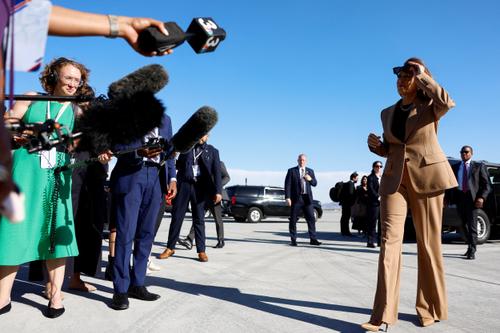Question: Revisiting Agenda-Setting: An Analysis of McCombs and Shaw’s Hypothesis in the Context of Modern Media and Political Campaigns
05 Jan 2025,4:01 PM
McCombs and Shaw hypothesised that, ‘the mass media set the agenda for each political campaign, inuencing the salience of attitudes toward the political issues’ (1972:177). Is their position still relevant?
Expert answer
DRAFT / STUDY TIPS:
In 1972, Maxwell McCombs and Donald Shaw introduced the agenda-setting theory, positing that mass media significantly influence the salience of political issues during campaigns. They argued that by highlighting certain topics, the media shape public perception, determining which issues are deemed important. This theory has profoundly impacted communication studies, political science, and sociology, offering a framework to understand media's role in public opinion formation.
Historical Context and Foundations of Agenda-Setting Theory
McCombs and Shaw's seminal study during the 1968 U.S. presidential election examined the correlation between media coverage and public perception of issue importance. Their findings indicated a strong relationship between the emphasis placed by the media on specific issues and the public's perception of their importance, leading to the formulation of the agenda-setting theory. This theory suggests that while the media may not dictate what people think, they significantly influence what people think about.
Core Principles of Agenda-Setting Theory
The agenda-setting theory rests on two key assumptions:
-
Media Filtering: News outlets determine which stories receive coverage, influencing the perceived importance of issues.
-
Audience Perception: The prominence of topics in the media affects the public's perception of their importance.
These principles underscore the media's power in shaping public discourse by selecting which issues to highlight.
Evolution of Media Landscapes
Since the 1970s, the media landscape has undergone significant transformations:
-
Proliferation of Cable Television: The 1980s and 1990s saw a surge in cable news channels, offering diverse viewpoints and 24-hour news cycles.
-
Digital Revolution: The advent of the internet introduced online news platforms, blogs, and social media, diversifying information sources.
-
Social Media Emergence: Platforms like Facebook, Twitter, and Instagram have become primary news sources for many, enabling rapid information dissemination and user-generated content.
These developments have diversified information sources, challenging traditional media's monopoly on news dissemination.
Contemporary Relevance of Agenda-Setting Theory
Despite these changes, the agenda-setting theory remains pertinent, though its dynamics have evolved:
-
Traditional Media's Enduring Influence: Mainstream media outlets continue to shape public discourse. For instance, television remains a crucial medium in American politics, playing a central role in setting the political agenda.
-
Social Media's Role: While social media platforms have democratized content creation, they often amplify narratives initiated by traditional media. Additionally, political candidates are increasingly utilizing influencers and podcast hosts to engage with the public, indicating a shift in media strategies.
-
Intermedia Agenda-Setting: There's a reciprocal relationship where traditional and new media influence each other's agendas, creating a complex information ecosystem.
Challenges in the Modern Media Environment
The contemporary media landscape presents challenges to the traditional agenda-setting model:
-
Information Overload: The sheer volume of information available can dilute the impact of any single media outlet's agenda.
-
Echo Chambers and Filter Bubbles: Algorithms on social media platforms can create isolated information environments, limiting exposure to diverse viewpoints.
-
Misinformation and Disinformation: The spread of false information can distort public perception, complicating the agenda-setting process. For example, disinformation has been shown to shape views about political candidates and affect voter perceptions.
Empirical Evidence and Case Studies
Recent studies continue to explore the agenda-setting function of the media:
-
Elections and Media Coverage: Research indicates that media coverage can significantly influence public perceptions of political candidates. For instance, media coverage of candidates can affect public perceptions and voter behavior in many ways, as media are a key way that people learn about the candidates.
-
Issue Salience: Media emphasis on specific issues can elevate their importance in public discourse, influencing policy discussions and public opinion.
Theoretical Extensions and Critiques
The agenda-setting theory has evolved to include:
-
Second-Level Agenda-Setting: This extension examines how the media not only tell us what to think about but also how to think about it by framing issues in specific ways.
-
Agenda-Building: This concept explores how media agendas are influenced by various actors, including public relations professionals, interest groups, and political entities.
Critics argue that the theory may overestimate media influence, suggesting that individual differences and selective exposure also play significant roles in shaping public perception.
Conclusion
McCombs and Shaw's agenda-setting theory remains a valuable framework for understanding media influence on public perception. While the media landscape has transformed with the rise of digital platforms and social media, the core premise—that media shape the salience of issues in public discourse—continues to hold relevance. However, the dynamics of this influence have become more complex, necessitating ongoing research to fully comprehend the interplay between traditional media, new media, and public perception in contemporary society.
Recent Developments in Media Influence on Politics
Harris and Trump prefer influencers and podcasters to mainstream media

